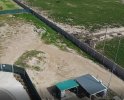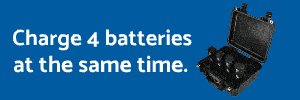This morning I have video to shoot a short distance from the Modesto, Ca airport. Actually almost in line with runway 28 Left.
Had an approval to fly up to 99 feet. Tower notified inbound aircraft that a drone operation was active and advised all aircraft to make a short downwind and turn base before the golf course.
So here comes a brand new pilot on a straight in way below the glideslope for 28 Left. Tower even tells him he is low on the glide slop.
Next thing I hear is this guy going right over my head and low. He jumps on the radio and tells the tower that I must be flying at least 250 AGL
I don't think this guy was expecting a drone pilot to be listening to the tower traffic.
You can see the shadow of the plane at the top of the picture. Notice the shadows on the structures, the sun is in the southern sky.
This guy deliberately overflew me and low.
Well I finished my short little video and headed for the Modesto airport.
The pilot was gone by the time I got there, but had a long talk with flight services and the manager of that rented the plane to this guy.
I never went over 75 feet on this flight.


Had an approval to fly up to 99 feet. Tower notified inbound aircraft that a drone operation was active and advised all aircraft to make a short downwind and turn base before the golf course.
So here comes a brand new pilot on a straight in way below the glideslope for 28 Left. Tower even tells him he is low on the glide slop.
Next thing I hear is this guy going right over my head and low. He jumps on the radio and tells the tower that I must be flying at least 250 AGL
I don't think this guy was expecting a drone pilot to be listening to the tower traffic.
You can see the shadow of the plane at the top of the picture. Notice the shadows on the structures, the sun is in the southern sky.
This guy deliberately overflew me and low.
Well I finished my short little video and headed for the Modesto airport.
The pilot was gone by the time I got there, but had a long talk with flight services and the manager of that rented the plane to this guy.
I never went over 75 feet on this flight.








